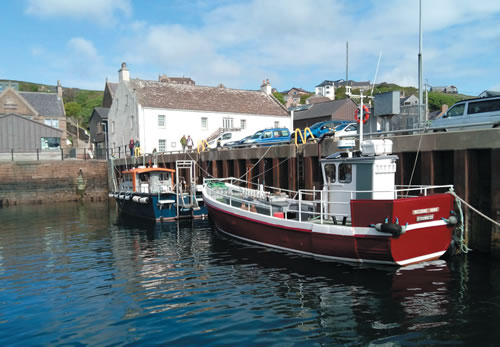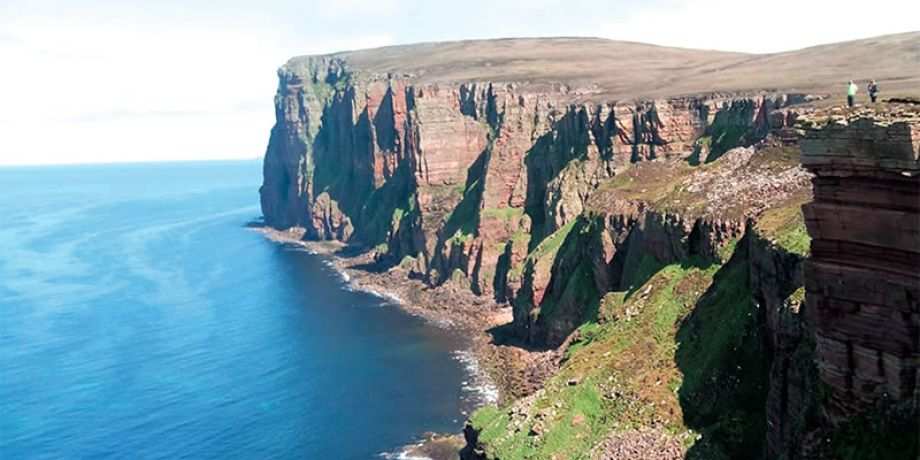
“In the fire of images,
I put my hand.”
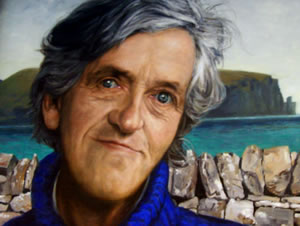
These are the words inscribed on a plaque in Edinburgh’s Royal Mile. They come from the pen of George Mackay Brown (1921-96), regarded by many as Scotland’s greatest writer of the twentieth century. Honored by various universities, awarded the Order of the British Empire by Queen Elizabeth in 1974, shortlisted for the Booker Prize for “Beside the Ocean of Time” in 1994, he became known internationally as “The Poet of Orkney.” What few people realize is that he achieved nearly all this while living as a reclusive semi-invalid within the confines of the tiny Orcadian port of Stromness. Even fewer are aware that in 1961 he created a stir in the staunchly Calvinist islands by becoming a Catholic — and that this conversion drew inspiration from another son of Orkney, the Viking earl known to history as Saint Magnus the Martyr.
While visiting Columban supporters on Orkney, local parishioners granted me the privilege of sharing their recollections of George, and even showed me some of his own memoirs. They remember a quiet, humble, unassuming member of the Catholic community. Columban benefactor Chris Taylor knew him well. “We never thought of him as this world-famous writer. For us he was just, well, George.”
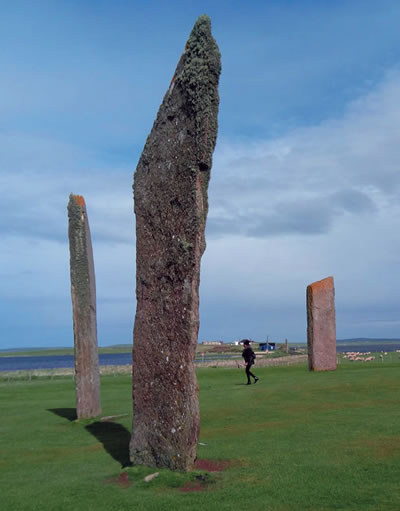
George Mackay Brown was born in a tiny cottage on a wharf in Stromness, the youngest of six children. His father became the village postman; his mother was a native Gaelic speaker. At an early age George contracted tuberculosis, a condition that was to leave him weakened for the rest of his life. Registered as unfit for wartime military service, he took up journalism with a local newspaper and almost immediately discovered he had a flair for writing. Scattered verses gradually merged into books of poems. By the 1960s he was celebrated as a poet of international stature, at which point he embarked on a similarly successful career as a novelist.
Always his inspiration was Orkney — its stark and windswept scenery, its millennial history, its people, legends and folklore.
However, it should also be mentioned that along the way George developed an affinity for the pint as well as the pen. “Stromness voted itself ‘wet’ in 1947,” George wrote. “Thus, I made another joyous discovery: beer.” Wikipedia’s biographer observes laconically that George’s subsequent conversion to Catholicism, “was not marked by any change in his daily habits, including his drinking.”
He’d been contemplating entering the Faith for some years. Parishioner Alison Gray writes how, “his surrender to Catholicism was…resonant in the wild beauty of Orkney,” and in its history, central to which was the figure of Magnus. “St. Magnus was a defining influence on Mackay Brown. His life was framed by St. Magnus.”
Magnus Ellendson (1080-1117) was of Viking stock. This warlike people had settled Orkney around the year 850. He was a Christian nobleman respected for his piety and gentleness. In 1105 the King of Norway appointed him Earl of Orkney alongside his cousin Haakon. After a while, conflict broke out between the two cousins. Anxious to avoid further bloodshed, Magnus agreed to join Haakon at a peace conference on a neutral island. However, the invitation was a trap and Haakon had him killed. Almost immediately, Magnus was revered as a saint and martyr. His remains were transferred to Orkney’s main town of Kirkwall and placed in the magnificent cathedral begun in 1137 and which bears his name.
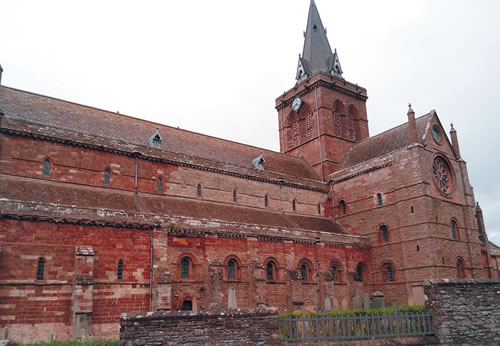
In 1973 George published “Magnus,” which some consider to be his masterwork. Into the novel he weaves a traditional belief that Magnus was warned of Haakon’s treachery the night before and urged to flee. Searching for divine guidance, Magnus goes to Mass and realizes that Jesus could also have fled Jerusalem on Maundy Thursday night and saved himself, but didn’t, because if there’d been no Cross there would have been no Resurrection, no triumph of life over death. So, like Jesus, Magnus stays. Like Jesus, Magnus even forgives his executioners before they dispatch him. For Mackay Brown, St. Magnus embodies the Jesus story. He might of Magnus, struggles with his own “demons,” such as ill-health, alcohol and periods of depression.
At any rate, God appears to have blessed the connection between the two men. When George died in 1996 his funeral was celebrated by Catholics and Protestants alike in the Cathedral of St. Magnus.
Not only that, but George died on April 13, and so the requiem was fixed for April 16 — which is the Feast of Saint Magnus the Martyr!
Fr. John Boles is Regional Director of the Columban Missionaries in Britain.
Selected Works by George Mackay Brown
- “The Storm” (1954)
- “Loaves and Fishes” (1959)
- “Greenvoe” (1972)
- “Magnus” (1973)
- “Vinland” (1992)
- “Beside the Ocean Time”(1994)
- “For the Islands I Sing: An Autobiography” (1996).
- Biography: “George Mackay Brown: No Separation,” by Alison Gray (2016).
